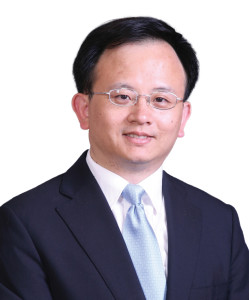Q: What is the State Intellectual Property Office’s (SIPO) position on post-filing supplementary data for the chemistry and biotech patents? A: It had long been criticized that in the chemical and biotech sectors, China’s SIPO was too stringent in accepting supplementary data post a filing for patent. The amended SIPO’s Patent Examination Guideline, which took effect on 1 April 2017, seemingly provided an answer to such criticisms, according to which supplementary data submitted after the filing date should be accepted and the technical effects to be testified by such supplementary data should be taken into consideration, on the condition that such technical effects are obtainable to a person skilled in the art, based on the original disclosure of the patent application.

WU LI
安杰律师事务所高级顾问
Senior Consultant
AnJie Law Firm
However, taking a closer look, many commentators are concerned that such amendments will only lead to a vicious circle: the supplementary data can only be accepted if the technical effects it intends to testify on have already been disclosed, yet they offer no definite guidelines for the applicant or the patentee to figure out when or how such technical effects to be testified on by the post-filing supplementary data can be deemed as disclosed in the original disclosure.
Q: Can you introduce some typical cases in this regard? A: Novartis’ Chinese patent related to the blockbuster drug “Entresto” was invalidated by the SIPO for lack of inventiveness, and it provided a vivid example of why commentators would have concerns.
On 27 December 2017, the Patent Re-examination Board (PRB) issued an invalidation decision regarding the Novartis patent, rejected the supplementary data filed during the invalidation procedure, and nullified the entire claim set for lack of inventiveness, even though there are clear conclusive statements in the original disclosure of the patent application stating that a combination of the individual components achieves greater therapeutic effect than the administration of the individual component alone.
To be specific, during the invalidation proceedings, to argue for the inventiveness of its claim, two pieces of evidence, which were supplementary experimental data, were submitted by the patentee to manifest that there exists a synergetic effect of lowering the blood pressure when using the pharmaceutical composition of the claim, rather than using the individual component separately. In fact, such evidence was previously filed and accepted during the patent prosecution process before the US Patent and Trademark Office. Still, the PRB refused to accept such supplementary data.

WANG RUI
安杰律师事务所高级律师
Senior Associate
AnJie Law Firm
In the PRB decision, the panel elaborated its position: (1) in order to manifest a compound or composition has a certain technical effect, the patent document needs to provide the experimental method, the experimental data or results, as well as the experimental conclusion, yet the present patent only provides the experimental method and conclusion regarding the synergetic effect of the pharmaceutical composition of its claim, not the experimental data; (2) without the experimental data, people skilled in the art are unable to just rely on the experimental conclusion to ascertain that the alleged synergetic effect of the pharmaceutical composition exists; and (3) the experimental data submitted by the patentee during the invalidation proceedings do not belong to the original disclosure. According to the first-to-file principle, the premise of accepting post-filing data is that the technical effect to be testified is already obtainable from the original disclosure. Consequently, the panel believed that the two pieces of supplemental data could not be used to demonstrate the technical effects of the present invention, and consequently inventiveness was not be established.
Q: What do you read from this case? A: The amendments to the guideline do not prevent the PRB from taking a position that is not very different from the previous one, that is, the technical effects that the supplementary data intend to manifest need not only be mentioned, but also be fully proved in the original disclosure. After all, the PRB has long expressed its concerns about accepting post-filing supplementary data, and worries that accepting such data would be detrimental to the first-to-file principle, because it might inappropriately encourage the applicant to file a patent application as early as possible through merely providing assertive conclusions, hiding the details and revealing data until later and so consequently destroying the founding principle of the patent system – to exchange protection with disclosure.
Q: Going forward, what can be expected for this data supplementation issue? A: In recent years, in response to heavy criticism about standards in the disclosure sufficiency issue, the SIPO is prone to adopt novelty or inventiveness rejections for chemical or biotech patent applications, instead of resorting to the notorious insufficient disclosure rejection, and that was a key reason why the amendments to the guideline were finally introduced. After the amendments, the practitioners in the chemical and biotech sectors were told that they should be able to restore their confidence in patent practice in China, because to submit supplementary data for inventiveness assessment finally had official recognition. However, from latest cases like the above-mentioned Novartis case, it is doubtful that the PRB’s standard regarding supplementary data has changed, regardless of a judgement of disclosure sufficiency or assessment of inventiveness. Practitioners who would like to see a breakthrough in this aspect may have to seek alternative approaches to the problem.
Wu Li is a senior consultant and Wang Rui is a senior associate at AnJie Law Firm
北京市朝阳区东方东路19号院5号楼
亮马桥外交办公大楼D1座19层 邮编: 100600
19/F Tower D1, Liangmaqiao Diplomatic Office Building, 19 Dongfang East Road
Chaoyang District, Beijing 100600, China
电话 Tel: +86 10 8567 5988
传真 Fax: +86 10 8567 5999
电子信箱 E-mail:
wuli@anjielaw.com
wangrui@anjielaw.com






















